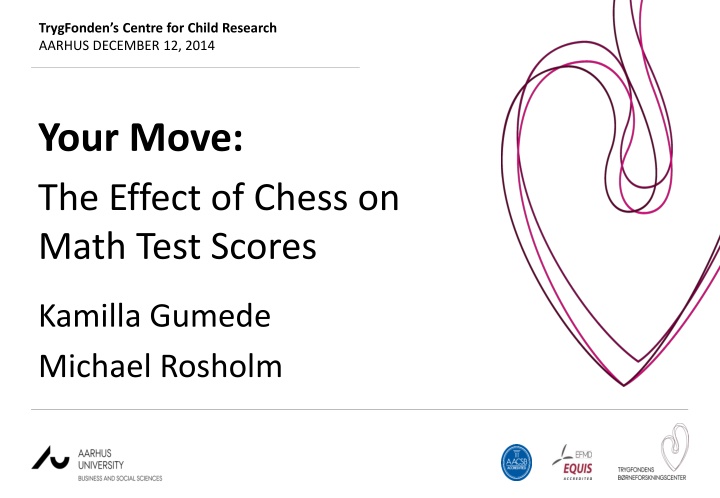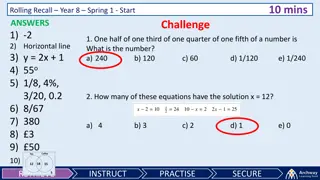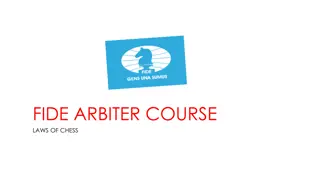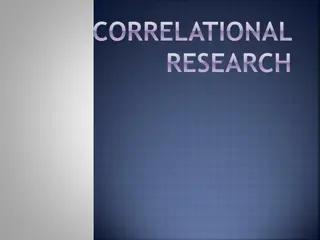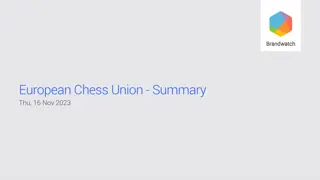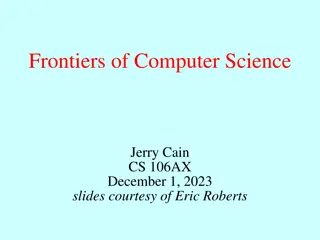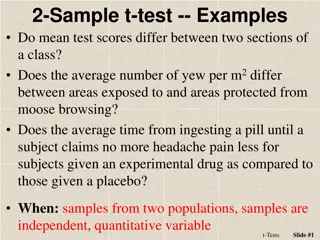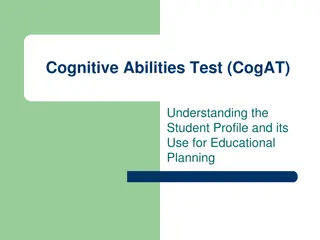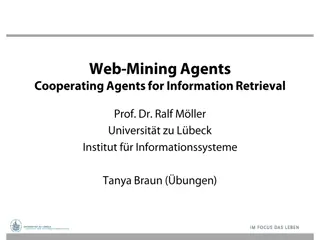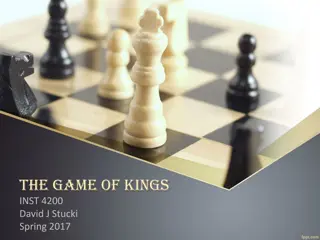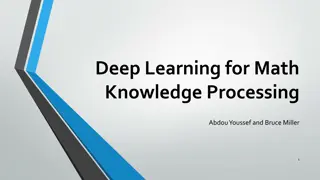The Effect of Chess on Math Test Scores: A Study by TrygFonden's Centre for Child Research
This study explores how teaching chess to children can impact their math test scores. Addressing the underpowered nature of the pilot study, the researchers aim to design an intervention focusing on improving cognitive and non-cognitive skills through chess instruction. Existing evidence suggests that chess enhances problem-solving abilities, concentration, patience, and self-control, potentially boosting intelligence and problem-solving skills. Preliminary findings indicate promising results, emphasizing the potential benefits of integrating chess into education.
Download Presentation

Please find below an Image/Link to download the presentation.
The content on the website is provided AS IS for your information and personal use only. It may not be sold, licensed, or shared on other websites without obtaining consent from the author.If you encounter any issues during the download, it is possible that the publisher has removed the file from their server.
You are allowed to download the files provided on this website for personal or commercial use, subject to the condition that they are used lawfully. All files are the property of their respective owners.
The content on the website is provided AS IS for your information and personal use only. It may not be sold, licensed, or shared on other websites without obtaining consent from the author.
E N D
Presentation Transcript
TrygFondens Centre for Child Research AARHUS DECEMBER 12, 2014 Your Move: The Effect of Chess on Math Test Scores Kamilla Gumede Michael Rosholm
Outline -very preliminary, comments welcome 1. Intro: Background, Aim 2. Existing Evidence 3. The Intervention 4. Data 5. Methodology 6. Results 7. Conclusion
Intro: Background Costs of primary and lower secondary schooling in Denmark are among the highest in OECD Yet, looking at cross-country data from the PISA studies, Denmark is always average in OECD Shift in focus from cognitive skills towards personality/behavioral factors and lack of self- control/grit/conscientiousness as explanations of school failure
Intro: Background Teaching chess may affect cognitive skills (fluid intelligence) directly indirectly through non-cognitive skill formation
Intro: Aim Aim: Design intervention to help children improve in school, specifically in mathematics, through teaching chess Think of the present study as a pilot study preparing for a larger scale randomized trial. As such, it is severely underpowered Nevertheless, interesting results emerge
Existing Evidence (Gobet & Campitallei 2006; Bart, 2014; Boruch, 2011; Berkman, 2004; and many others) Chess is a sequential game, where the players make moves in turn with white and black pieces on the chess board with the aim of capturing the opponent s king Very complex calculation and planning ahead the ability to concentrate memorizing sequences of moves and resulting positions rewards the ability to exert patience and self-control a set of rules of conduct may directly increase intelligence and problem solving abilities
Existing Evidence Trinchero (2013): Impact of chess instruction on PISA math test scores. Non-randomized data on children aged 8-10 in Italy. Chess instruction in school improves problem solving abilities Boruch (2011): Only sufficiently powered RCT to date. 33 Italian schools, 30 hours of chess instruction, 3rdgrade classes. Chess instruction increases math achievement by a third of a standard deviation. Foreign born pupils have better impacts.
The Intervention Five schools in the City of Aarhus, 1stto 3rdgrade Starting in January 2013 and ending mid October 2013 1st-3rdgrade classes participate in the study as either treated or control classes. No random allocation however, almost always A class is control and the rest is treated. Students in treated classes have one weekly math lecture replaced by a weekly chess lecture NOTE: Control classes have more maths! One teacher doing all the teaching A book developed by Dansk Skoleskak: SKAK+MAT was used
The intervention Figure 1. A typical chess exercise from the book used for chess instruction Accompanying text: How many pieces can the knight take? Write your answer on the line below
Data Pre- and post math tests developed by City of Aarhus Calculation Problem solving Pattern recognition Merged with register based info at TrygFondens Centre for Child Research
Variable Treatment group Comparison group Standardized pre-intervention test-score Boy Girl Age 1stor 2ndgeneration immigrant Days of school absence 2012 Grade 1 Grade 2 Grade 3 # siblings Age of mother Mother lower secondary school Mother highschool Mother vocational education Mother short academic education Mother medium academic education Mother masters education or more Mother s average ann. earnings past 3 years, DKK Mother not working 2011 Father present Age of father Father lower secondary school Father highschool Father vocational education Father short academic education Father medium academic education Father masters education or more Father s average ann. earnings past 3 years, DKK Father not working 2011 N 0.00 0.54 0.46 9.57 0.28 9.21 0.19 0.45 0.36 1.46 40.53 0.42 0.07 0.27 0.05 0.07 0.11 195,276 0,29 0.79 43.28 0.19 0.05 0.30 0.08 0.14 0.17 278,564 0.19 0.05 0.50 0.50 9.45 0.25 9.94 0.31 0.33 0.36 1.53 40.42 0.41 0.08 0.22 0.06 0.08 0.14 188,578 0,30 0.76 42.28 0.15 0.04 0.30 0.10 0.13 0.18 284,405 0.20 323 159
Data Kernel density estimate, change in testscores .4 .3 Density .2 .1 0 -4 -2 0 2 4 diffstdscore Treatment Comparison kernel = epanechnikov, bandwidth = 0.2642
Methodology Level model with control for pre-test scores, child s characteristics, parental characeteristics, and school fixed effects ??1= ? + ???0+ ???+ ???0+ ???+ ?? (1) Learning model, change in the test score is explained by the same variables ??1 ??0= ? + ???+ ???0+ ???+ ?? (2) + D-i-D PS mathching (Heckman, Ichimura, Smith, Todd, 1998)
Results Table 3. Estimation results, change in standardized test-scores Model 2: dummy 3: school characteristics 4: 3+mother s and father s characteristics Impact estimate 0.18 Standard error 0.09 R-squared 0.01 Only chess 2+child and 0.16 0.09 0.04 0.17 0.09 0.08
Results summarized Positive effect for boys (0.22) but NS for girls Positive effect for native Danes (0.22) but not for 1st or 2nd generation immigrants No interactions significant across grades, pre-intervention test scores, or morther s educational attainment Positive effects on pattern recognition (~fluid intelligence) No impact on calculation or problem solving No impact on school absence after program (during?)
Conclusion Are the impacts large? Let s do the RCT! Then we ll conclude
